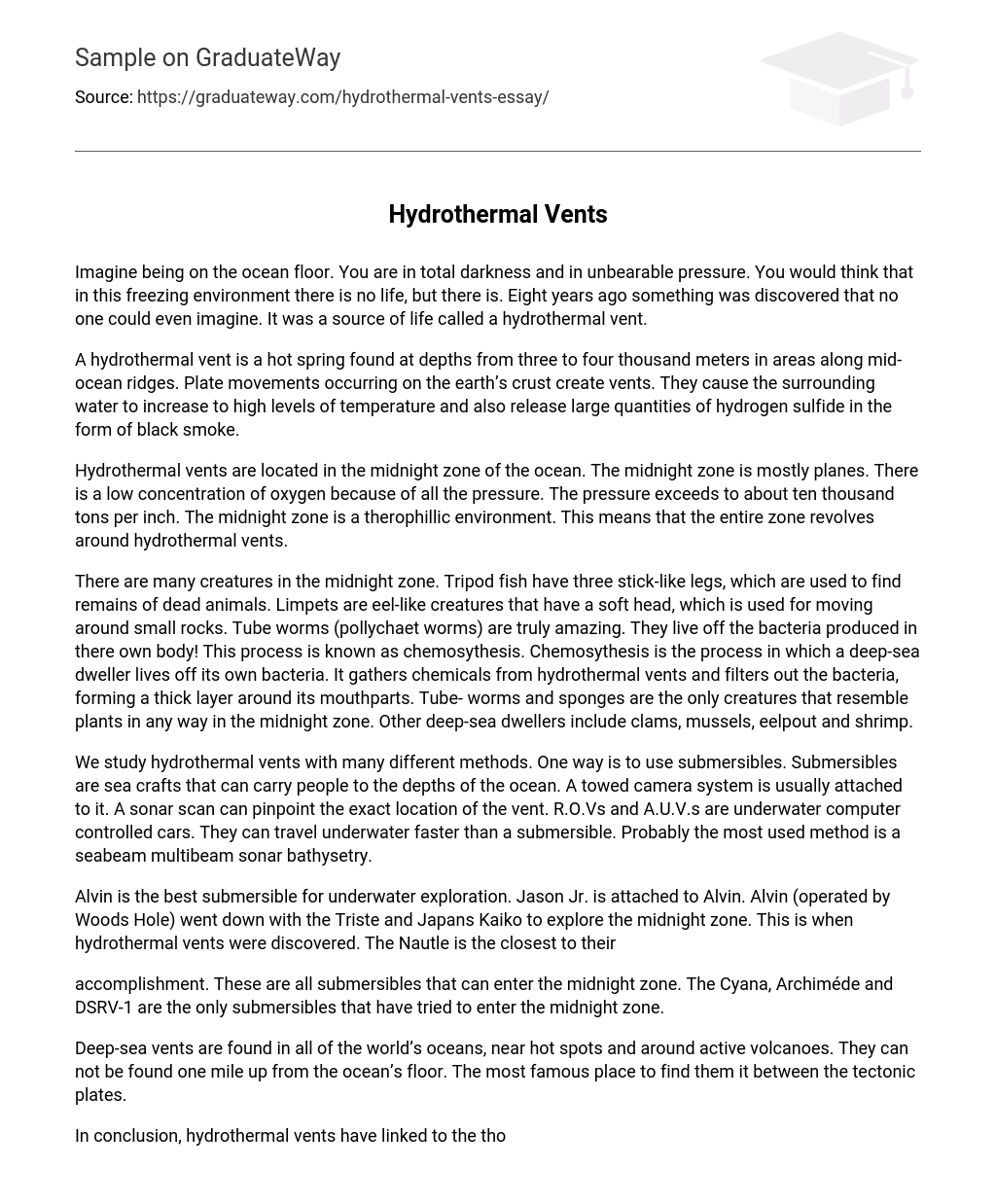In the depths of the ocean, imagine being surrounded by darkness and enduring immense pressure. Despite the frigid temperatures, life manages to thrive in this apparently inhospitable environment. An astonishing finding was made eight years ago – a hydrothermal vent that acts as an essential lifeline.
Hydrothermal vents are formed at depths of three to four thousand meters along mid-ocean ridges. These vents result from plate movements on the earth’s crust, causing significant heating of the surrounding water. Consequently, high temperatures occur and a substantial amount of hydrogen sulfide is released in the form of black smoke.
Hydrothermal vents, typically situated in the midnight zone of the ocean, are commonly found in a flat region. This area experiences immense pressure reaching ten thousand tons per inch, resulting in limited oxygen levels. The midnight zone is renowned for its thermophilic features and centers around hydrothermal vents.
The midnight zone is home to many creatures, including tripod fish, limpets, and tube worms (polychaet worms). Tripod fish have legs that resemble sticks and are used to search for remains of deceased animals. Limpets are eel-like organisms with soft heads that they use to navigate small rocks. Tube worms have a fascinating ability to live off the bacteria produced in their own bodies through a process called chemosynthesis. Chemosynthesis involves deep-sea dwellers collecting chemicals from hydrothermal vents, filtering out the bacteria, and forming a thick layer around their mouthparts. In the midnight zone, tube worms and sponges are the only creatures that bear any resemblance to plants. Other deep-sea dwellers in this zone include clams, mussels, eelpout, and shrimp.
We use various methods to study hydrothermal vents, including submersibles, towed camera systems, sonar scans, R.O.Vs, A.U.V.s, and seabeam multibeam sonar bathysetry.
Alvin, operated by Woods Hole, is the best submersible for underwater exploration. Jason Jr. is attached to Alvin. During an expedition to the midnight zone, Alvin went down with the Triste and Japan’s Kaiko to discover hydrothermal vents. Closest to their location is the Nautle.
Three submersibles – Cyana, Archiméde, and DSRV-1 – are the only ones that have attempted to enter the midnight zone, showcasing their accomplishment.
Deep-sea vents can be found in oceans around the globe, usually near areas with high temperatures and active volcanoes. These unique habitats are not present at a depth of one mile above the ocean floor. The most well-known area to locate deep-sea vents is between tectonic plates.
Speculation exists regarding the potential for life on other planets, as hydrothermal vents are believed to be capable of sustaining life in extreme conditions such as darkness, high pressure, low oxygen levels, and temperatures around 0º Celsius.
WEBSITES
http://www.geneso.edu/~jc99/hydro.html
http://hyperion.advanced.org/18828/data/db_2.html
http://www.pmel.noaa.gov/vents/geology/methods.html
http://wwwyrbe.edu.on.ca/~mdhs/compscl/dpt3ar/oceanog/ahydrovt.html
http://www.geneso.edu/~jc99/whatarethey.html
http:/mbgnet.mobot.org/salt/oceans/zone.htm
BOOKS
Under The Sea, The Nature Company Discoveries Library, PP.32-33
Mysteries of the Sea, By Perrine, Doug, Publications International, LTD PP. 239,302,
OTHER
World Book Science Year 2000, PP.237
World Ocean Floors-Pacific Ocean, Shupe, John Washington, D.C., June 1992





